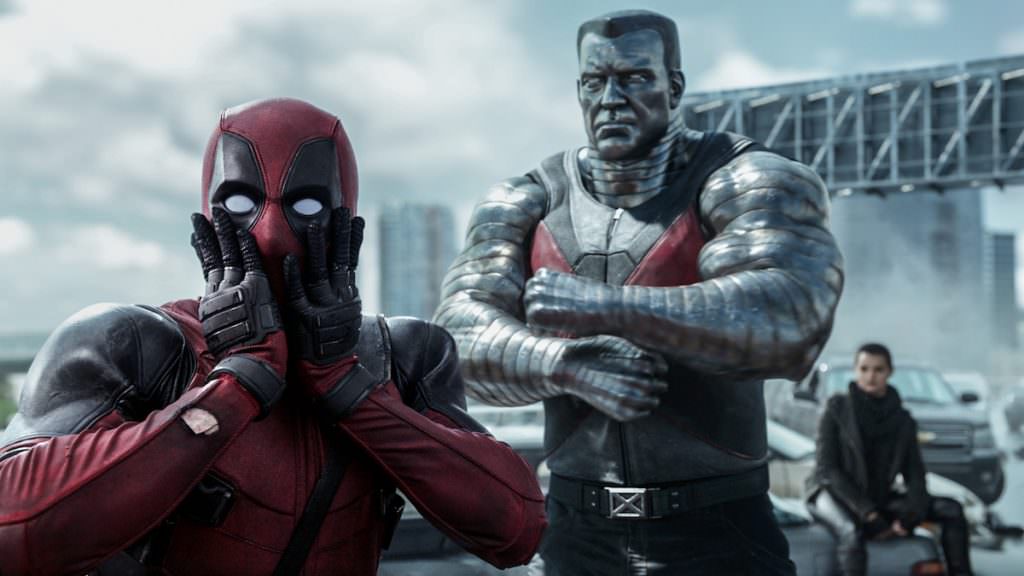It’s All About the Doors: Production Designers at Comic-Con
“These images are more widely recognized than Michelangelo’s David or the Parthenon,” John Muto (Home Alone) said as he introduced the members of the production designers panel with a series of clips from films like The Avengers and Dawn of the Planet of the Apes and television series like True Blood and Constantine.
Before you hear a word of dialog or learn a character’s name, the production design must instantly introduce you to the world of the story you are about to see – the tone, the era, the taste and priorities of the people in the story, the work they do, and the way they spend their money. “These images are there because another human being had an imagination.”
And those images become iconic in ways their designers could not predict. James Chinlund said “the most exciting thing ever” was walking into a room with “a lot of Scandinavians around a table covered with LEGO prototypes” based on his designs for The Avengers. And Suzuki Ingerslev had the dubious pleasure of seeing her designs replicated not just for a Muppet parody of True Blood but for a porn version, too.
They were called art directors for decades until William Cameron Menzies, the man who had the most significant influence on movie design in the first half of the 20th century, played such an important role in creating the look of Gone With the Wind that a one-time title was given to him: Production Designer. And then everyone wanted it. But the union is still called the Art Directors Guild.
It is very important that the sets they design look lived in unless the script calls for something that is supposed to look sterile or brand new. They are so good at making spaces look authentically grimy that occasionally actors will complain that they are being asked to work in a hazardous environment and they have to show photos of the freshly painted “before” sets to prove that all of the dust has been artificially added. They even have to create “clean trash” that looks like garbage.
Ingerslev spoke about her work on the sexy vampire series True Blood with Alan Ball. “My design concept is that the supernatural has to be grounded and realistic. We were creating underground spaces in Louisiana for the vampires, but Louisiana has the water table. So I decided we should include water in the sets, which gives us the opportunity for reflections.” She was inspired by a cistern she saw in Istanbul. At first it was rejected as too complicated because the water has to be continually drained and re-filled. And sometimes cast and crew members fall in because they think it is movie water and somehow not real. “That’s just an added laugh for me.” But it contributed enormously to the atmosphere of the scenes.
She also had to create a fairy strip club. “You can’t research what a fairy strip club looks like. You just have to have fun. Once we figured out what the sets were, it drove the costumes and the interactions of the characters. You always have to ask, ‘What are the extras going to be doing?’”
Research can only take you so far. Sean Haworth visited a real scrapyard for a big action sequence in Deadpool. “But it was not that interesting to shoot, a lot of pointy, rusty metal objects.” It was not that safe, either. Real scrapyards are not set up for stuntmen running through them and climbing on – or falling from — piles of junk. So they had to build their own, finding an empty space and literally bringing in tons of metal. “’Take this school bus and put it on top of the pile and don’t let it fall on anyone.’ It was like a big LEGO set.” One pile was 65 feet tall, with a rubber slide for the stuntmen to fall on. “They wanted the stuntmen to fall ten feet and then bounce and fall another ten feet. I had to learn to rappel, and I have vertigo!”
Chinlund spoke about creating the artifacts of an ape civilization for Dawn of the Planet of the Apes. “It’s an aggressive, defensive structure that gets more refined” as the apes develop greater sophistication and become more knowledgeable.
Dave Blass (Preacher) explained the difference between designing for movies and designing for television as “the extra door theory.” With movies, the script tells you everything you will need to be able to show. But with any luck, a television show will go on for years, with storylines that no one can predict at the beginning. “So you always have to put in some extra doors.” You don’t know where they lead when you create them, but if the show goes on, you will need them for something.




